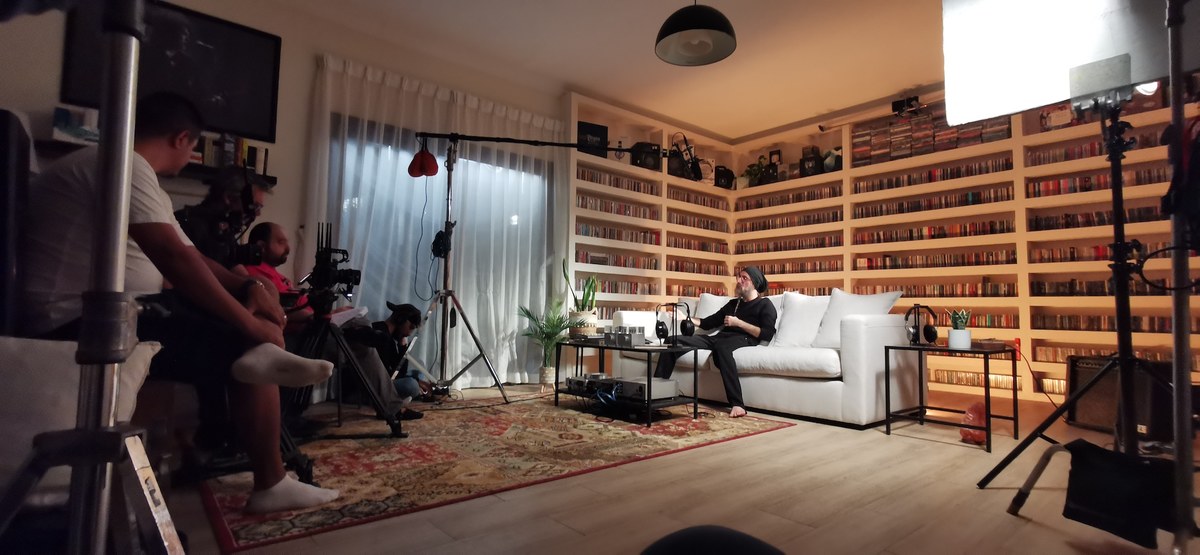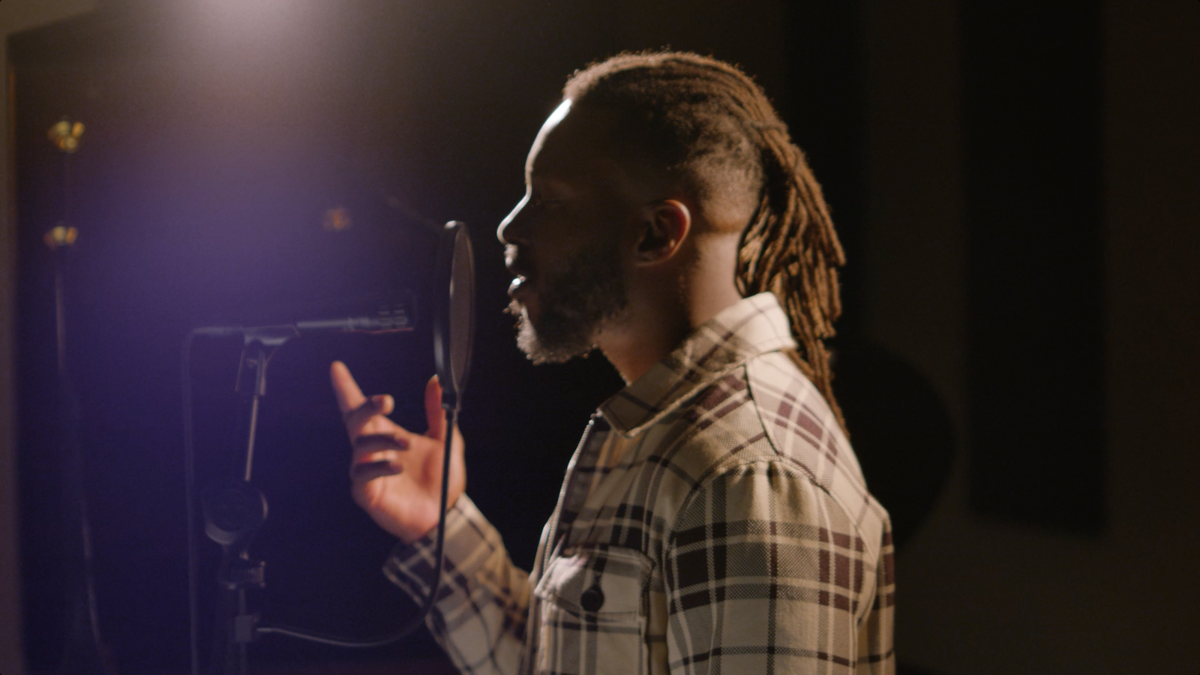DUBAI: From photographing influential public figures and A-list celebs to capturing scenes of global conflict, French-Syrian photojournalist Ammar Abd Rabbo has covered it all over the last three decades.
Abd Rabbo was born in Damascus. He says he developed an interest in journalism from an early age and later went on to study political science in Paris, eventually working for a number of agencies and having his photography featured in the likes of Time Magazine, Paris Match, Le Monde, and Asharq Al-Awsat.
So, after all these years, how does he define the perfect image? “People usually remember images that have a strong element of contradiction,” Abd Rabbo, who is based between Paris and Beirut, tells Arab News. “Let us consider one of the most famous images in modern history — ‘The Tank Man’ from Beijing in 1989. This was a lonely man, unidentified and unarmed, who was able to stand up against military tanks and stop the whole column. There’s so much contradiction and, in a way, it is a perfect image.
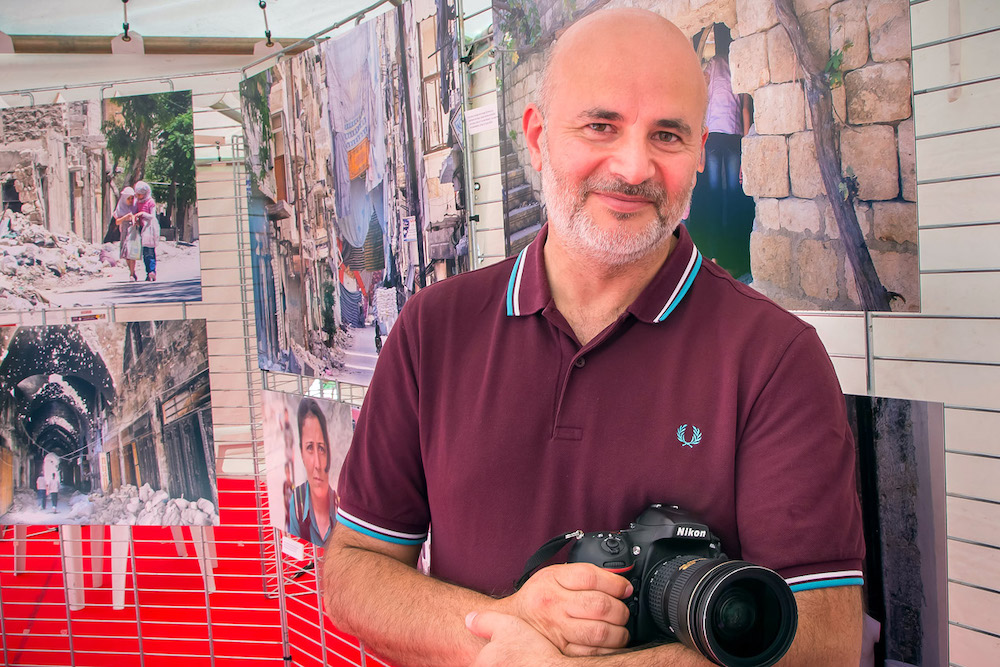
Portrait of Ammar Abd Rabbo. Supplied
“A picture is not just a click on a button,” he continues. “That is often the easiest part. You need a meaning — an image that people can read, where they see something, ask questions, feel it.”
Abd Rabbo’s latest project is a charity exhibition, hosted by Dubai’s Ayyam Gallery. “To Beirut…” — which runs until Nov. 1 — documents the aftermath of the deadly Beirut port blast in August. Seventy-five percent of proceeds from the exhibition will be donated to Lebanese NGO Beit El Baraka, which has been rehabilitating damaged homes and small businesses.
“In just a few seconds,” he wrote in a statement, “Friends were lost, families were separated, people were wounded, not to mention the material devastation. We all bear scars from August 4.”
Here, Abd Rabbo talks us through some of the most significant images from his career.
Untitled (2020)
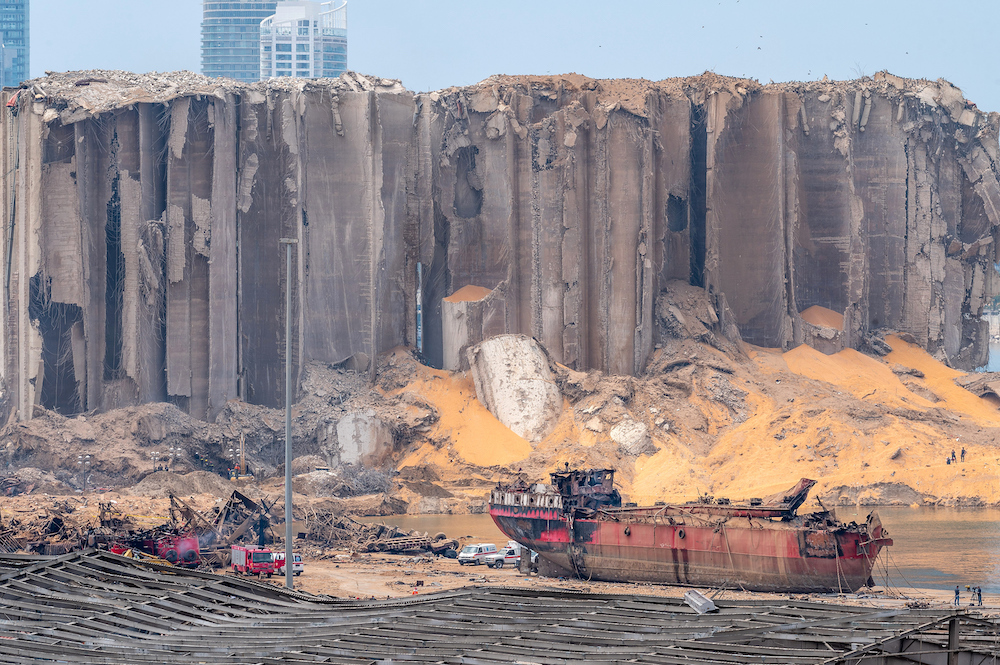
Three days after the explosion on August 4, I took this image of Beirut’s port. There’s something surreal and cinematic in it, like a scene out of “Planet of the Apes” or “Mad Max”. We see cars and people standing nearby and this enormous ship, which shockingly ended up on the dock. In the background, you’ll see some of Beirut’s new buildings, which symbolize normal life, far away from the destruction. Another thing is the wheat — which looks like sand — and how it’s flowing from the silo. In a way, the wheat and the grain silo saved Beirut from further damage. They absorbed the shock of the explosion. Without them, the number of victims could have doubled.
Michael Jackson (1997)
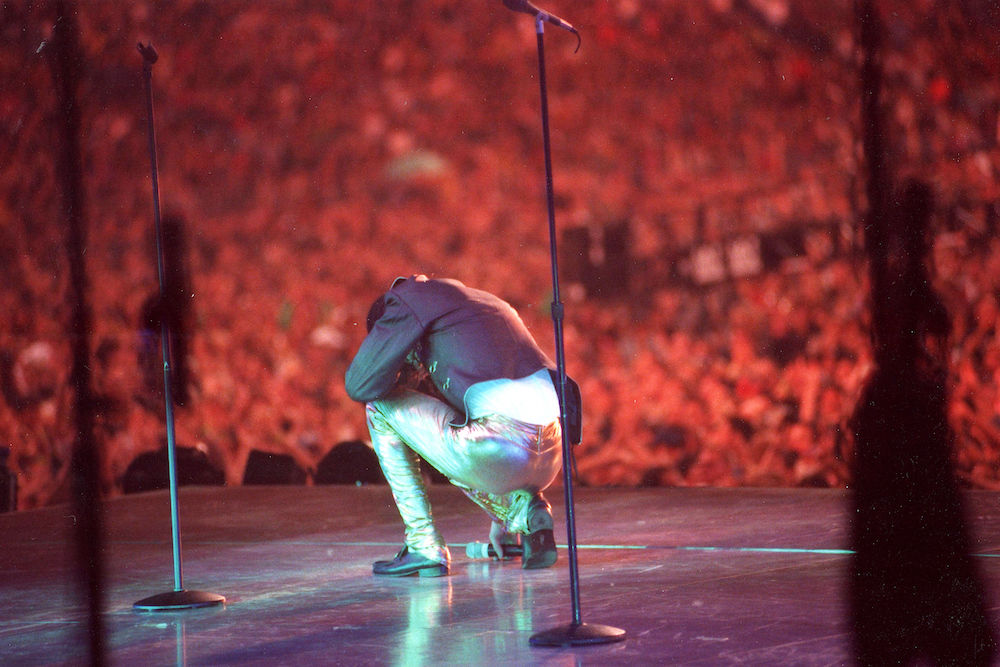
This was taken at a concert in Munich. Through photography, I’m trying to find a deeper meaning to things or something that’s telling. This image tells of the fragility and loneliness of the artist: He’s alone, isolated and kneeling on the stage floor against this background of a massive audience, which takes up three quarters of the photograph. I love this image and it was widely circulated after he died. He had enormous success, but at the same time, he was lonely and far away from people.
Into the Wild (2014)

This was taken in Aleppo during the war. People were using bed sheets and carpets woven together to make a kind of wall to protect themselves. Just as I was about to take this picture, a motorbike appeared, which was great because it offers a human presence in the image and shows how huge the wall was. Many people have compared the wall to a dead end, with the boy on the bike representing all of us Syrians — heading in a direction with no exit. It’s also funny to think that something as simple and fragile as cloth or fabric can protect (you) from bullets.
Emmanuel Macron (2017)

This was taken on the day Macron was sworn in as president in France. He was 39, the youngest president ever. It was raining that day and as I was covering my camera, I missed taking a beautiful shot of one of the horses standing. I was angry and focused on trying to get a better image. Later on, when editing, I found this one. It looks like a painting with the horses, flags and the president in the middle. Some time later, a friend told me that Macron saw my image and liked it. So, I made a large print and gifted it to him. I was surprised that he sent me a beautiful letter thanking me for this image and inviting me for coffee at the Elysée Palace. This made me feel that there was an appreciation for the role of the photographer, which is often neglected in our region.
Beirut Protests (2019)
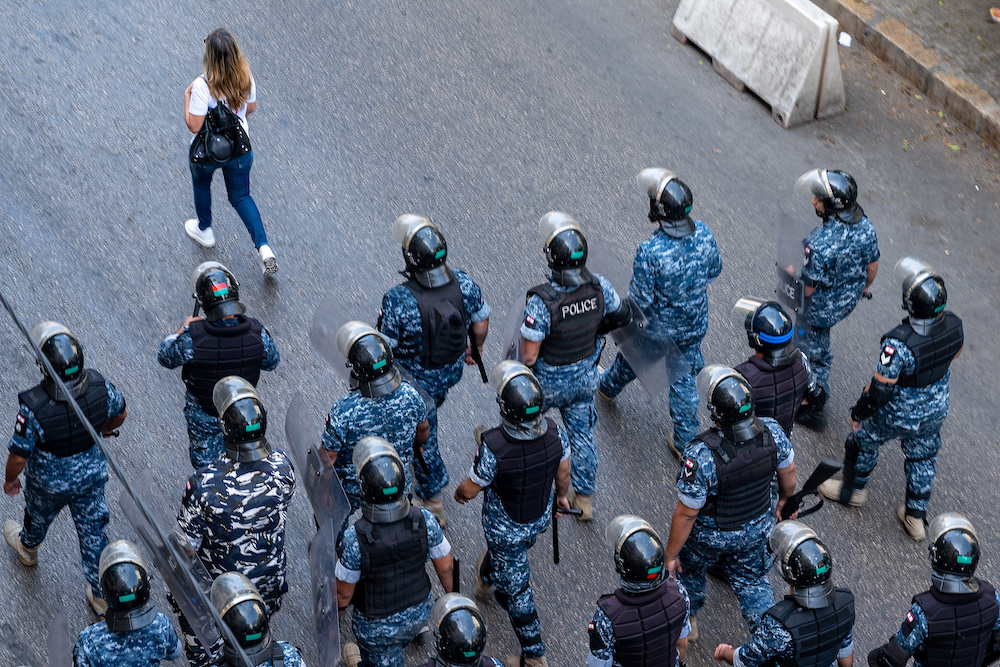
This image was taken the day after the October 17 revolution began in Beirut last year. I was at a training session with Google and we heard noises from outside. I went to the balcony to take a shot. Photographing from above was not good, because you couldn’t see the signs. All of a sudden, this scene happened: A woman was walking, followed by security forces. There’s a strong sense of direction and dynamism in this picture. People interpreted it differently: some said it represents sexual harassment, aggression, and the opposition between civil society and the military, but others see a woman leading and many men following. It’s quite interesting.
Benazir Bhutto (2000)
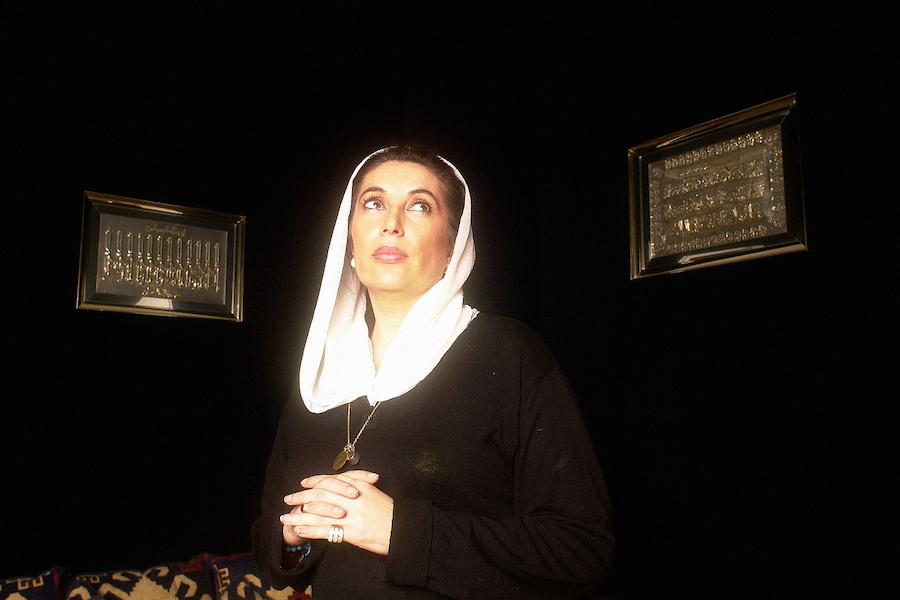
I met Benazir Bhutto when she was exiled in London. I wanted to take pictures of her but she didn’t have time and told me that if she came to Paris, she would let me know. A while later, she came to Paris and was invited to a dinner hosted by a friend. I was told that I could come to the dinner and take her picture. I found this room that had Quranic verses hanging on its walls; the room was dark and had a beautiful effect. There’s something holy about this image — like the paintings of the Virgin Mary — it’s as if she’s looking at the sky and folding her hands in prayer. I took other close-up pictures of her, one of which made it to the cover of Time after she was assassinated.
Stephen Hawking (2001)
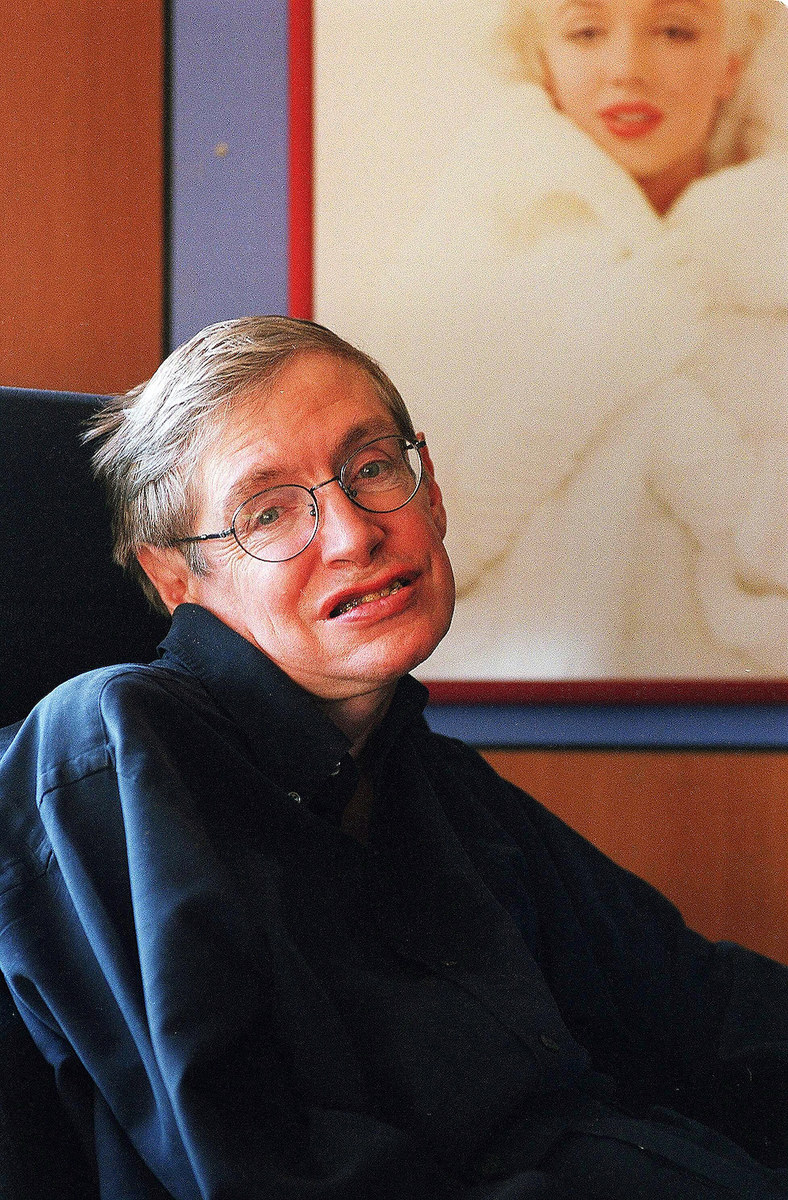
Stephen Hawking doesn’t like photographers. When I arrived in Cambridge to photograph him for a French magazine, I was warned by his wife and assistant that if he doesn’t enjoy my company, he will turn his famous wheelchair around and leave. They said that many photographers condescend to him because he’s in a wheelchair and can’t speak. I found that surprising, since he’s a genius. When I entered his office, I was respectful, but talking with him was odd — if you ask him a question, it will take him more than a minute to answer because he’s forming sentences on his screen. He told me that he doesn’t like photography and I replied, “Then we’re even, because I don’t like physics.” This made him laugh. I found it surprising that he had a picture of Marilyn Monroe on his office wall. He told me that he loved her and so did I. “So we do have something in common,” he said.
















